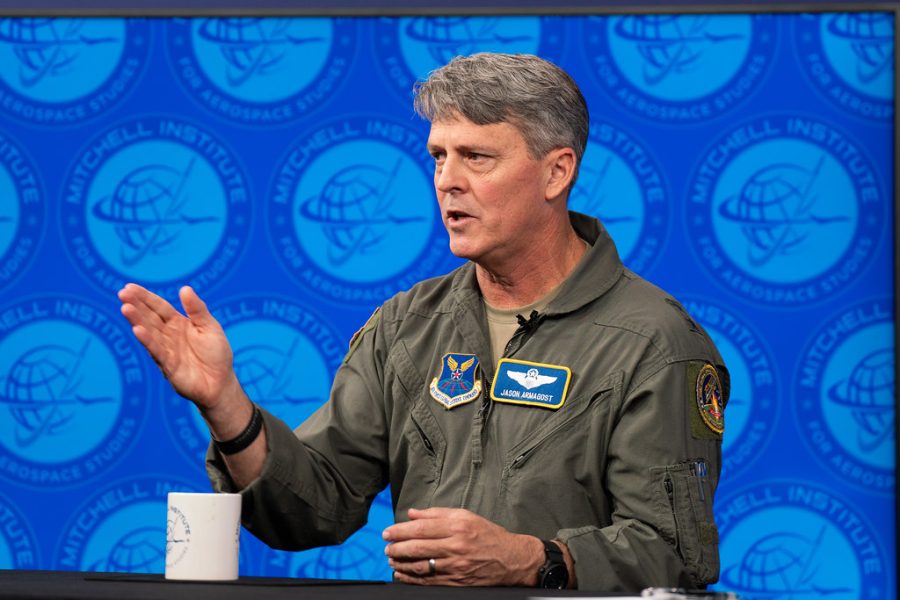The U.S. can’t assume that exercising long-range airpower will always mean one-off strikes such as the recent Midnight Hammer operation against Iran, the two-star general overseeing the Air Force bomber fleet said Aug. 7, arguing that the military must invest now in options for high-tempo operations many years away.
“I can never assume that any single strike is going to be enough,” 8th Air Force Commander Maj. Gen. Jason Armagost said on a webinar hosted by the Air & Space Forces Association’s Mitchell Institute for Aerospace Studies. “We have to be ready and postured and capable of generating, very quickly … across the platforms, to bring that long range, global capability, [and] mass to problem sets.”
While Midnight Hammer—the June 22 strike against Iran’s nuclear enrichment facilities—was a success, “we had to be ready for what was the next question to be asked, or what was the next problem to be confronted,” Armagost said. He suggested that following up with a second-day attack on June 23 might not have been possible with the forces available.
The action “resulted in a ceasefire about 30 hours after the strike,” he noted, but “you can’t count on that” to happen in every instance.
Bringing on the stealthy B-21 Raider, now in testing, will allow the Air Force to build a bomber “campaign force” that can wield multiple types of munitions and strike on more than one continent at a time, Armagost argued. The Air Force plans to buy at least 100 Raiders, nearly doubling the current bomber inventory, though it has also floated the idea of a 145-piece B-21 fleet.
“We have to provide as many options as we can to the decision makers,” he said. “20 years from now, 10 years from now, we don’t know what those national security challenges are going to be.”
There’s an “unbelievable deterrent value … when you have overwhelming capability to penetrate and hold at risk these targets around the world,” he added. Getting that number wrong, he said, would “make deterrence more fragile.”
Even without dozens more stealth bombers waiting in the wings, the seven B-2s involved in Midnight Hammer pulled off the mission thanks to the 125 aircraft that participated in the operation overall, as well as personnel all over the world, Armagost said. And it wouldn’t have been possible without almost two decades of work on the Massive Ordnance Penetrator, the monster bomb that the B-2s dropped on Iran’s hardened, deeply buried nuclear facilities.
Those kinds of targets “can be now held at risk with assurance, with real predictability,” he said.
Looking ahead, Armagost signaled the need to invest in other modern assets, like the EA-37 Compass Call electronic-attack jet, that complement the bomber fleet.
He wants the Pentagon to scrutinize the stockpile of current and future weapons through the lens of the threats it might face ahead. That’s different from the wars in Iraq and Afghanistan, when the Air Force could use any munitions it wanted and wasn’t “pressured” to advance the state of the art, he said. Considering how to attack potential threats “would drive you to different choices,” he added.
“What you’re ultimately trying to do … is create options,” he said. “You look at cost per kill, you look at strike efficiency. How do you get the most with the least, or with the most diverse options?”
“You don’t want to field a sixth-generation aircraft with third-generation weapons,” he said.


